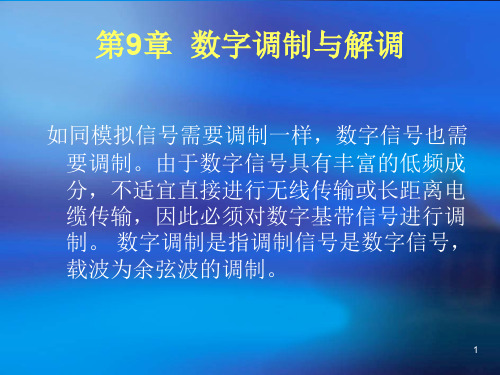2.1.1 Fourier Analysis
In the early 19th century, the French mathematician Jean-Baptiste Fourier proved that any reasonably behaved periodic function(周期信 号), g(t) with period T can be constructed as the sum of a (possibly infinite) number of sines and cosines:
2.1.3 The Maximum Data Rate of a Channel
If the signal consists of V discrete levels, Nyquist’s theorem states: max imum data rate = 2 H log 2 V bits / sec For example, a noiseless 3-KHz channel cannot transmit binary (two-level) signal at a rate exceeding 6000bps. So far we have considered only noiseless channels. If random noise is present, the situation deteriorates(恶化) rapidly. And there is always random noise present due to the motion of the molecules in the system. The amount of thermal noise present is measured by the ratio of the signal power to the noise power, called the signal-to-noise ratio. If we denote(以…为符号) the signal power by S and the noise power by N, the signal-to-noise ratio is S/N. Usually, the ratio itself is not quoted(引用); instead, the quantity 10log10S/N is given. These units are called decibels (dB).





